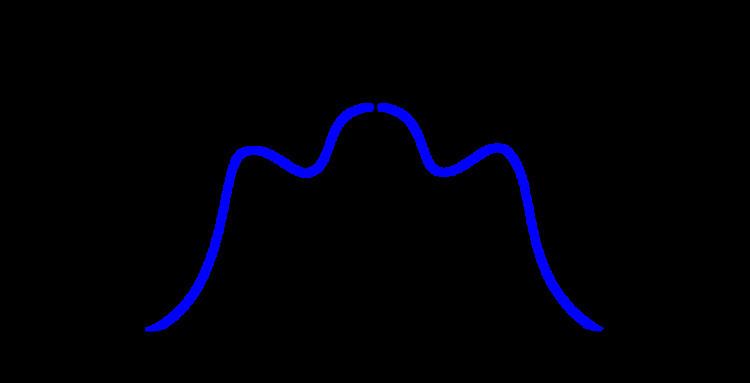 | ||
Bandlimiting is the limiting of a signal's Fourier transform or power spectral density to zero above a certain finite frequency. A band-limited signal is one whose Fourier transform or power spectral density has bounded support.
The signal may be either random (stochastic) or non-random (deterministic).
In general, infinitely many terms are required in a continuous Fourier series representation, but if a finite number of Fourier series terms can be calculated from that signal, that signal is considered to be band-limited.
Sampling bandlimited signals
A bandlimited signal can be fully reconstructed from its samples, provided that the sampling rate exceeds twice the maximum frequency in the bandlimited signal. This minimum sampling frequency is called the Nyquist rate. This result, usually attributed to Nyquist and Shannon, is known as the Nyquist–Shannon sampling theorem.
An example of a simple deterministic bandlimited signal is a sinusoid of the form
The signal whose Fourier transform is shown in the figure is also bandlimited. Suppose
or twice the highest frequency component in the signal, as shown in the figure. According to the sampling theorem, it is possible to reconstruct
as long as
The reconstruction of a signal from its samples can be accomplished using the Whittaker–Shannon interpolation formula.
A bandlimited signal cannot be also timelimited. More precisely, a function and its Fourier transform cannot both have finite support. This fact can be proved by using complex analysis and properties of Fourier transform.
Proof: Assume that a signal f(t) which has finite support in both domains exists. Let's sample it faster than the Nyquist frequency, and compute respective Fourier transform
One important consequence of this result is that it is impossible to generate a truly bandlimited signal in any real-world situation, because a bandlimited signal would require infinite time to transmit. All real-world signals are, by necessity, timelimited, which means that they cannot be bandlimited. Nevertheless, the concept of a bandlimited signal is a useful idealization for theoretical and analytical purposes. Furthermore, it is possible to approximate a bandlimited signal to any arbitrary level of accuracy desired.
A similar relationship between duration in time and bandwidth in frequency also forms the mathematical basis for the uncertainty principle in quantum mechanics. In that setting, the "width" of the time domain and frequency domain functions are evaluated with a variance-like measure. Quantitatively, the uncertainty principle imposes the following condition on any real waveform:
where
In time–frequency analysis, these limits are known as the Gabor limit, and are interpreted as a limit on the simultaneous time–frequency resolution one may achieve.
